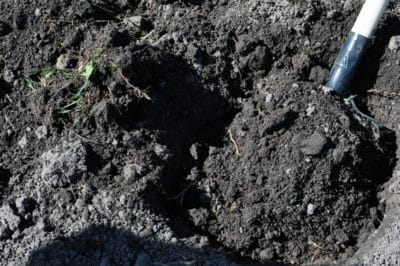The Perfect Soil
No one starts a garden with perfect soil, but if there were such a thing for potatoes, it would have certain characteristics:
- Perfect soil would be moisture-retentive but also drain well.
- The soil pH would be on the acidic side, between 5.5 and 6.0.
- Texture is important to potatoes – the soil would be loose and friable.
- Perfect soil would be high in nutrients and rich with microorganisms but free of disease and insects.
Soil Nutrients
Potatoes can get along with soil that is otherwise less than ideal, but if it doesn’t have enough of the required nutrients, tubers will be small, misshapen or more susceptible to disease. Potatoes need nitrogen until flowering begins, when nitrogen needs drop and potassium needs rise. In addition, phosphorus, calcium, magnesium, zinc and boron are important micro-nutrients for potatoes.
Soil Tilth
Unlike crops that produce food above ground, the potato has certain requirements to allow tuber development. Rocks more than a couple of inches in diameter can lead to misshapen tubers. The soil should be very loose and friable to make it easy for tubers to expand. It’s also easier to hill potatoes with loose, friable soil.
Soil Drainage
In cold, wet conditions, potatoes are susceptible to rot and other diseases. Well-drained soil is critical to proper development and to help prevent diseases. Heavy clay can also pack down, especially in high rainfall areas, restricting root and tuber development. However, excessively sandy soils can drain too quickly, leaching soil nutrients and water the plant needs for development.
Soil Types
The ideal soil for almost any garden is a sandy loam. Sandy loam is usually defined as a soil that has equal parts of silt, sand and clay. Sandy soils, on the other hand, have higher proportions of sand – they are lower in nutrients, leach readily and blow away with any wind. Clay soils are thicker, heavier and don’t drain as well due to their high proportion of clay particles. They are usually rich in nutrients, however.
Building Perfect Soil
In almost all cases, the addition of humus is the first step to building better soil. Sandy soils benefit because humus increases water retention and nutrients. Clay soils benefit because humus makes them lighter and more friable. Well-rotted leaves or grass clippings, aged manure and organic compost are good choices. A green manure that is turned under and allowed to rot is another good choice.
